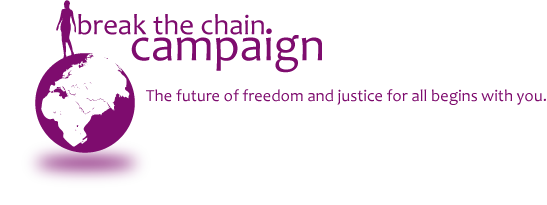Environmental Refugees in Bangladesh: The Link between Environmental Degradation and Human Trafficking
 Wednesday, March 17, 2010 at 6:24PM
Wednesday, March 17, 2010 at 6:24PM
Posted By Sarah Lumbert, Domestic workers health Center Intern
In recent years, much attention has been placed on natural disasters and environmental changes triggered by climate change. Bangladesh is a stark example of the effect these changes have on vulnerable populations. Flooded or eroded croplands and salinized soil from the coastal areas to Dhaka illustrate the disruptive effect that environmental degradation has on the poor. Displaced villagers, once self sufficient in the countrysides and fishing villages, stagger to Dhaka to find a new way of life and to provide a meager existance for their families. Out of desperation, many of these people accept offers of work in faraway places. From there, they may end up in Dubai, Saudi Arabia, or still farther. Too often, these refugees are coerced or deceived into debt bondage or prostitution.
Natural disasters such as an earthquakes and tsunamis are not the only environmental factors that can tranform large populations into environmental refugees. In Bangladesh, floods, river erosion, deforestation, and storms are ever-increasing dangers that are intensified by climate change.Over 12 million people live in Dhaka, and over 400,000 newcomers enter the city each year, most of whom are environmental refugees that have lost everything. The Nobel Prize-winning IPCC predicts 20 million Bangladeshis will be displaced by 2050 because of sea level rises and an increase of natural disasters caused by changing weather patterns.
Bangladesh is situated on the largest river delta in the world. Near the capital, Dhaka, three iconic rivers converge: the Ganges, the Brahmaputra, and the Meghna. 80% of the land consists of floodplains. Each year, thousands of acres are eroded from floodplain areas, creating a dual problem: a dramatic increase in displaced populations and an alarming decrease in the arable land. These factors leave many families homeless and force them to head for the capital to join the ranks of urban squatters and shanty town dwellers. As many as half the people in Dhaka (6 million) live in these types of deplorable conditions, claims Atiq Rahman, a climate change researcher and Executive Director at the Bangladesh Center for Advanced Studies. He goes on to state that approximately three million of those individuals have been displaced and ended up in Dhaka because of environmental degradation and disasters.
Once refugees arrive in the slums of Dhaka, security is a serious concern. Parents live in fear that child traffickers will kidnap their children while they are away at work. Once these refugees experience upheaval from their traditional way of life, the structure of the family is also disrupted. Mothers and fathers are forced by desperation to provide for their families in any way they can. These situations are breeding ground for criminals to take advantage of a vulnerable, often illiterate population that is unprepared for their new life in a mega-city urban setting.
Many of the environmental problems that have caused Bangladesh’s forced migrations can be attributed to climate change linked to carbon emissions. The US, China, Russia, and India have all received criticism from Bangladeshi leaders for their role in perpetuating climate change. These changes affect every level of Bangladeshi life. There are few governments in the world less capable of providing resources and aid for such vast populations of displaced people. Should China, Russia, and India be required to provide humanitarian aid to the Bangladeshis? Should the US Department of State allocate special attention and TIP funding to environmental refugees in Bangladesh? In terms of policy, how should the link between environmental refugees and human trafficking efforts be approached? Moving into the future, there are more questions than answers but it is clear that cases such as Bangladesh should not be ignored on a policy level or an academic level.


Reader Comments (1)
I cannot believe that human trafficking is still alive these days. I don't think I would be able to live with myself if I would lose my kid.